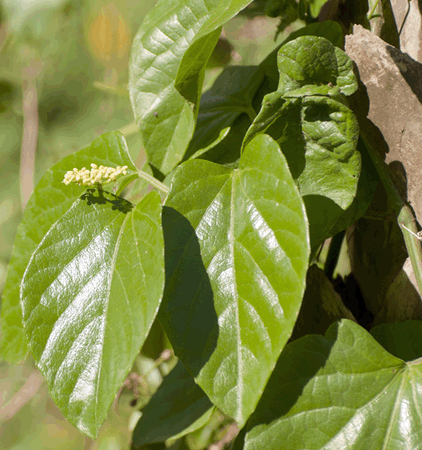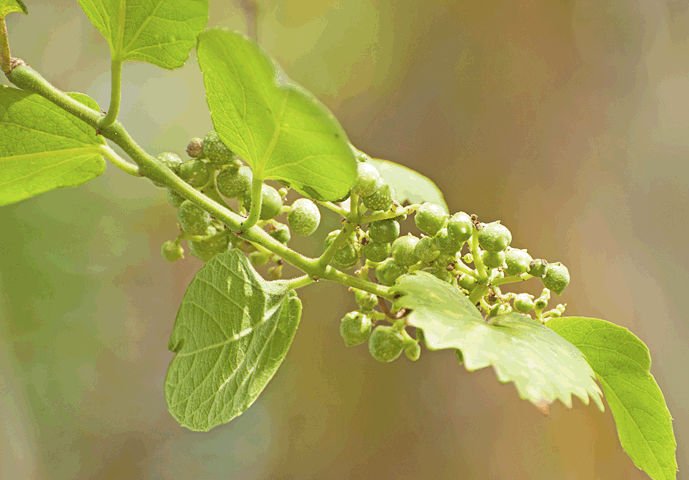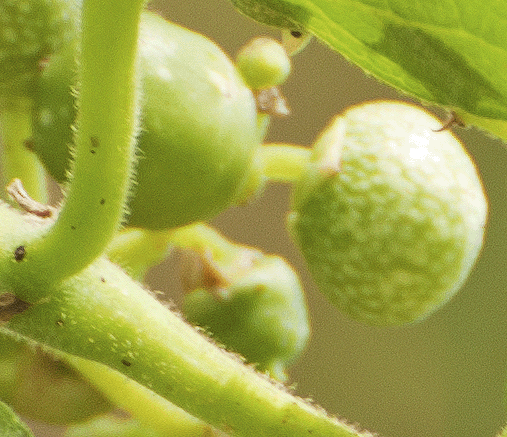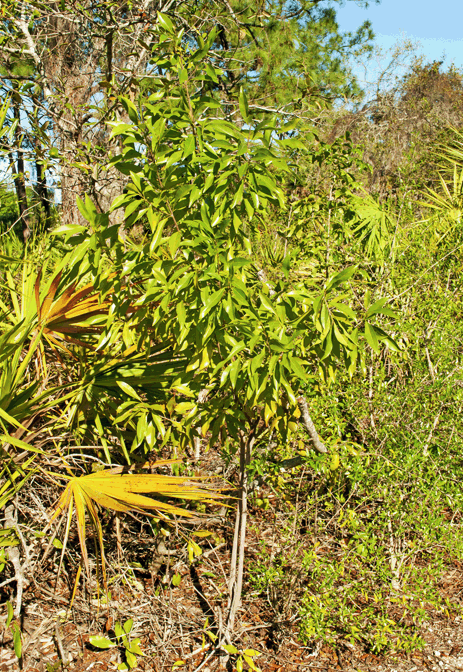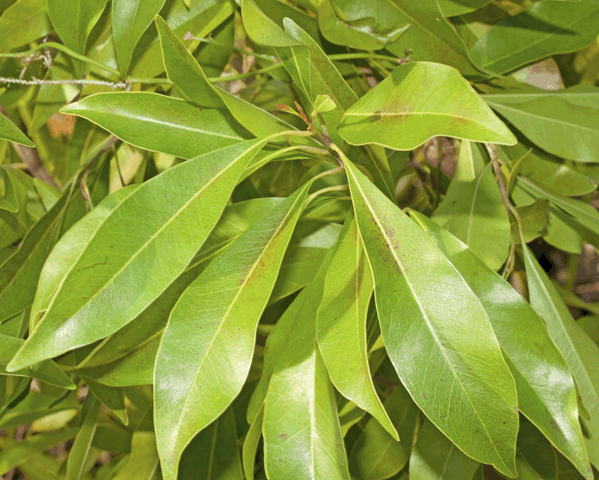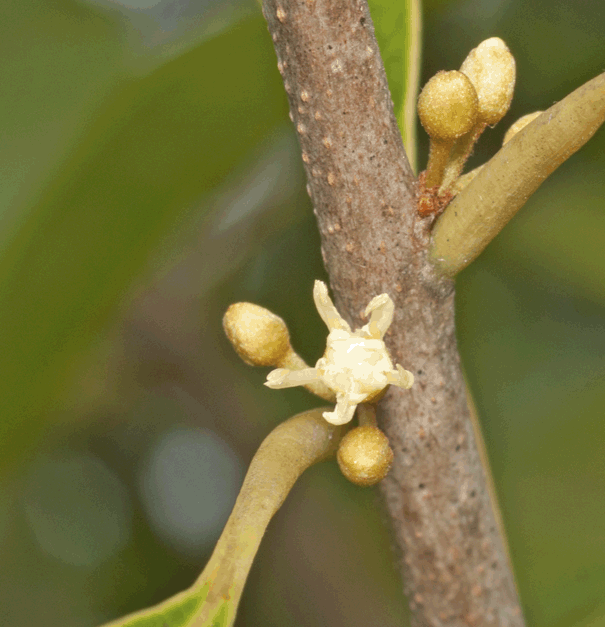Centrosema virginianum thru Citharexylum fruticosum
Species Name |
Common Name |
Centrosema virginianum |
|
Ceratiola ericoides |
|
Chamaecrista fasciculata |
|
Chamaecrista nictitans |
|
Chamaesyce bombensis |
|
Chamaesyce hirta |
|
Chamaesyce mendezii |
|
Chromolaena odorata |
|
Chrysobalanus icaco |
|
Cicuta maculata |
|
Cirsium horridulum |
|
Cissus verticillata |
|
Citharexylum spinosum |
Centrosema virginianum Spurred Butterfly Pea
|
Ceratiola ericoides Florida Rosemary
|
Chamaecrista fasciculata Partridge Pea
|
Chamaecrista nictitans Sensitive Pea
|
Chamaesyce bombensis Dixie Sandmat
|
Chamaesyce hirta Hairy Spurge
|
Chamaesyce mendezii Mendez’s Sandmat
|
Chromolaena odorata Jack-In-The-Bush
|
Chrysobalanus icaco Cocoplum
|
Cicuta maculata Spotted Water Hemlock
|
Cirsium horridulum Purple Thistle
|
Cissus verticillata Possum Grape
|
Citharexylum spinosum Fiddlewood
|
© Photographs and text by Susan Leach Snyder (Conservancy of Southwest Florida Volunteer), unless otherwise credited above.

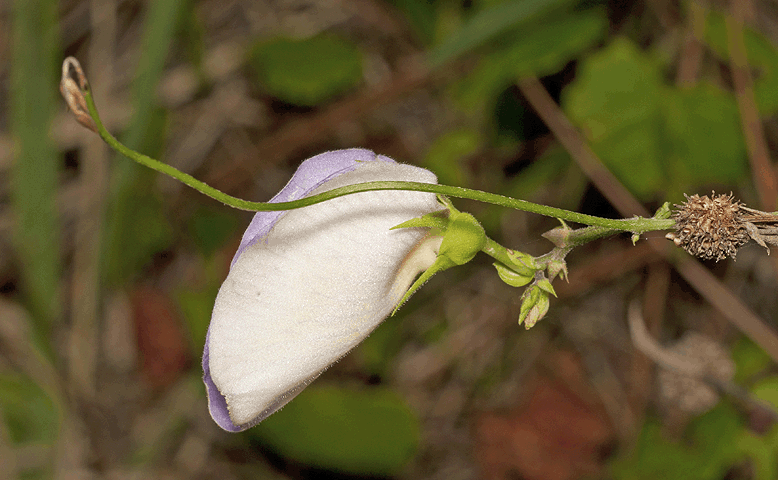
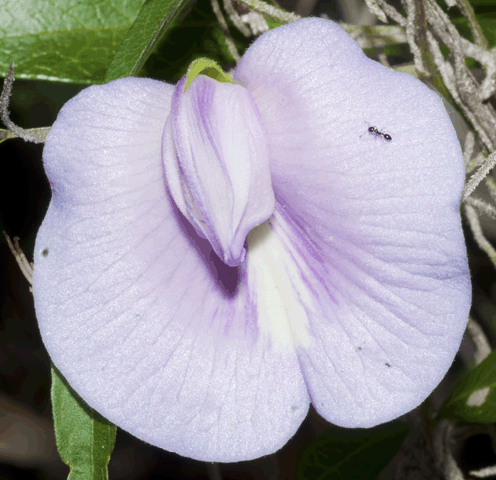
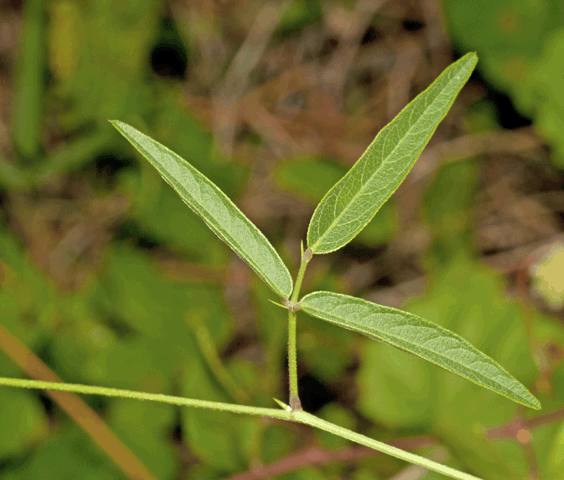
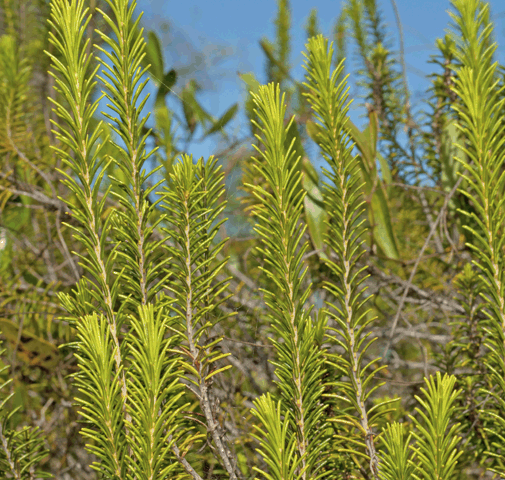
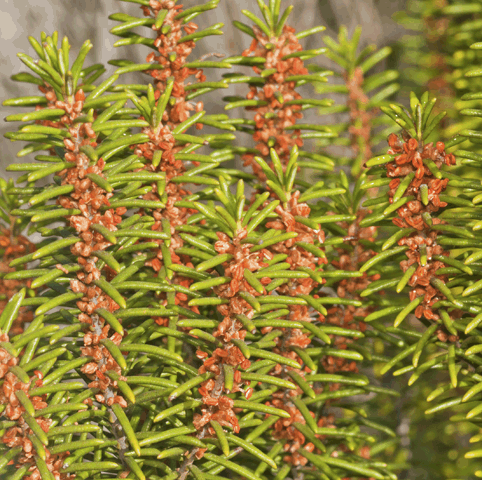
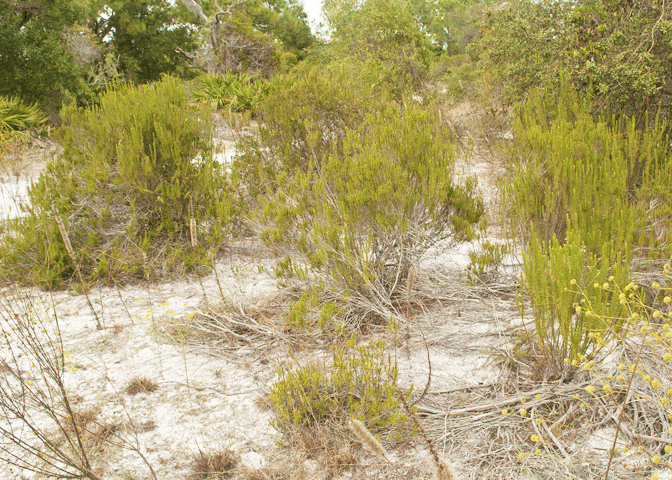 Ceratiola ericoides
Ceratiola ericoides 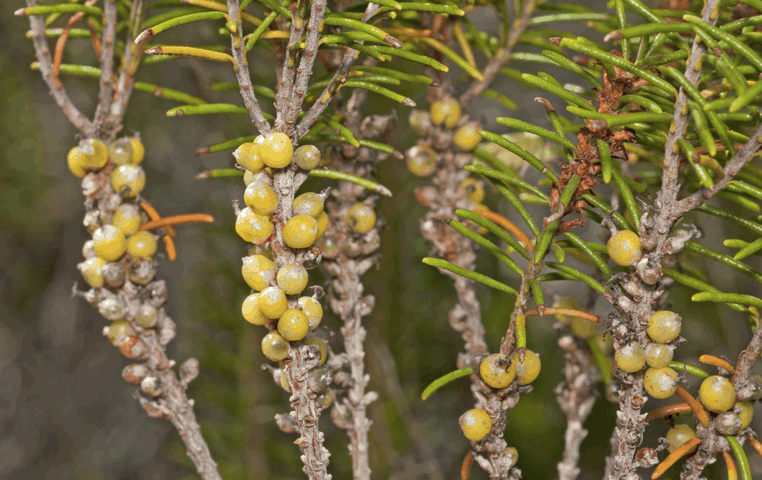 Ceratiola ericoides is dioecious (having both male and female plants). The average age for reproductive individuals is 15-16 years. Both sexes produce flowers. Male flowers (shown in photograph two) produce pollen that is transported by the wind. Once female flowers are fertilized, fruits begin their development. The fruits (shown in the fourth photograph) are greenish-yellow drupes that contain seeds. The fruits are consumed by ants, mice, and birds.
Ceratiola ericoides is dioecious (having both male and female plants). The average age for reproductive individuals is 15-16 years. Both sexes produce flowers. Male flowers (shown in photograph two) produce pollen that is transported by the wind. Once female flowers are fertilized, fruits begin their development. The fruits (shown in the fourth photograph) are greenish-yellow drupes that contain seeds. The fruits are consumed by ants, mice, and birds. 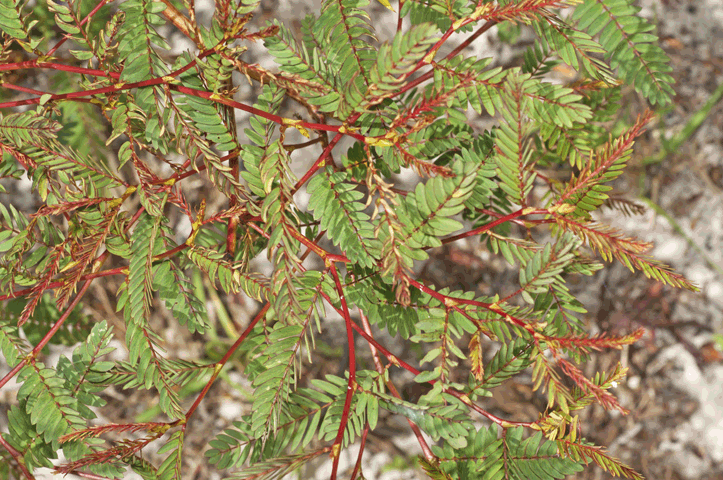
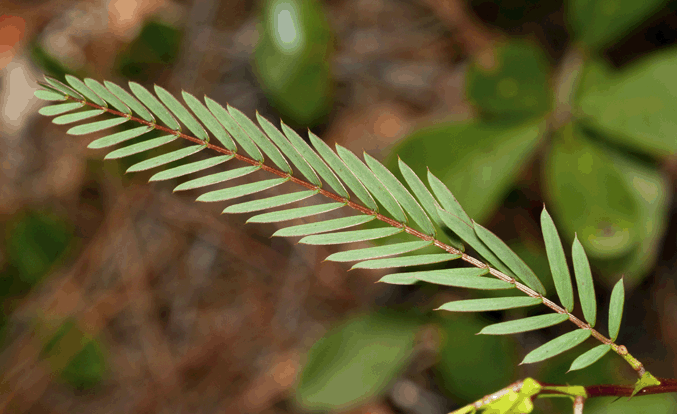
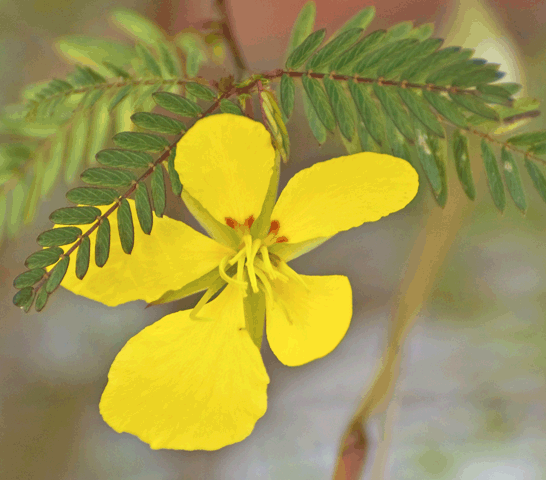

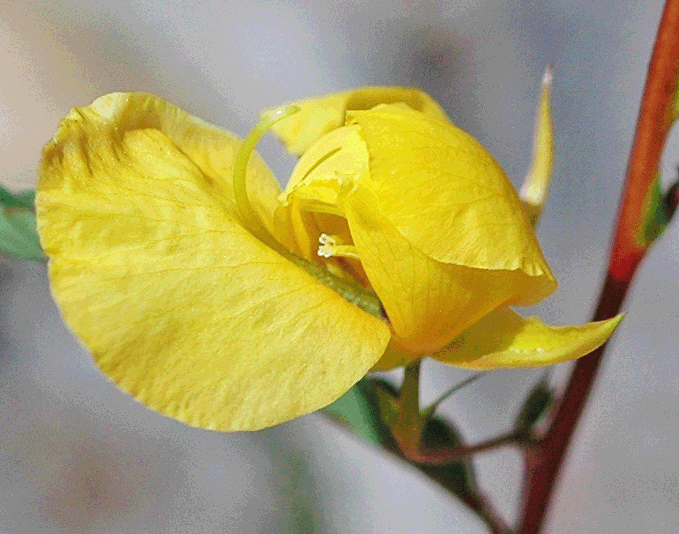
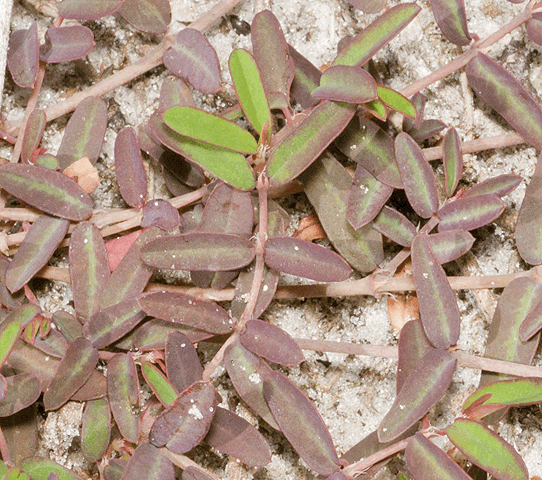
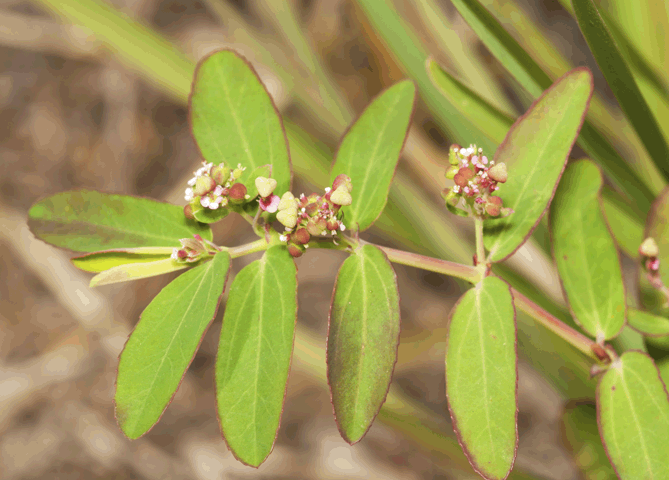
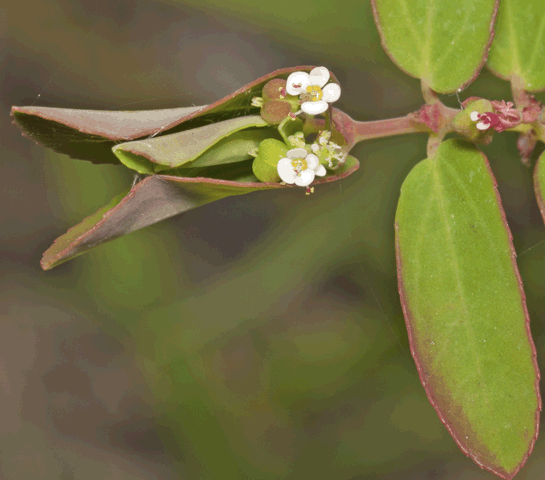
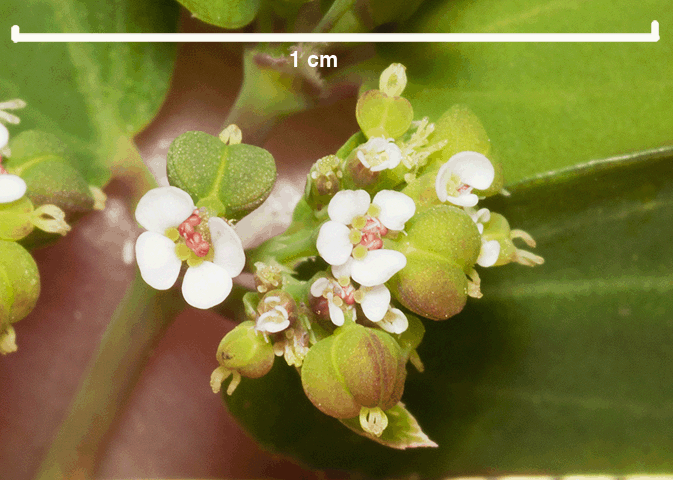
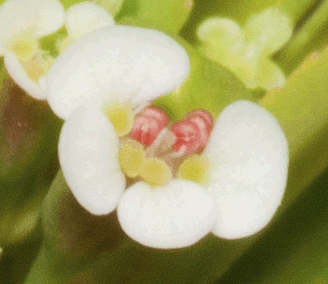
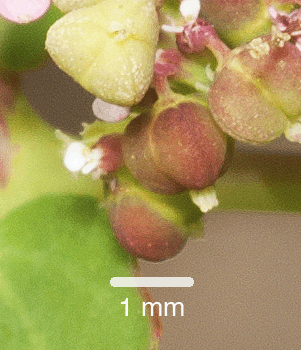

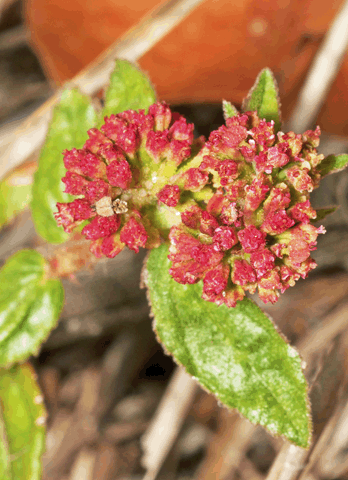
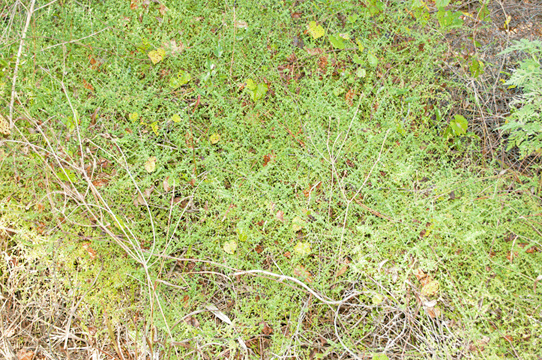

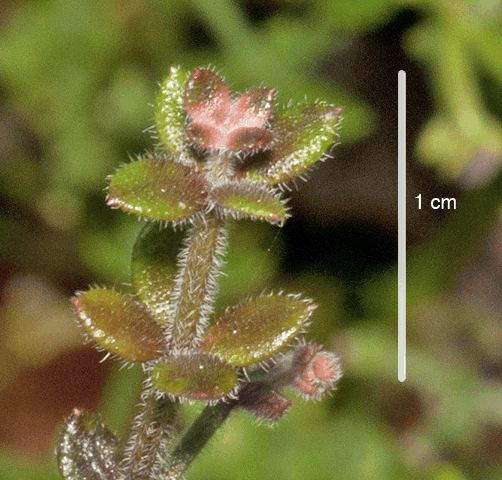
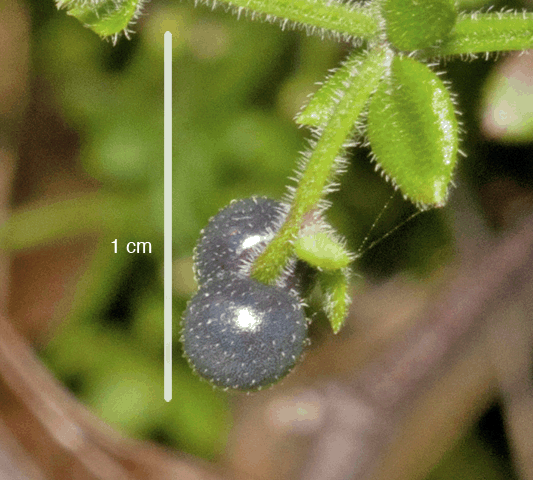
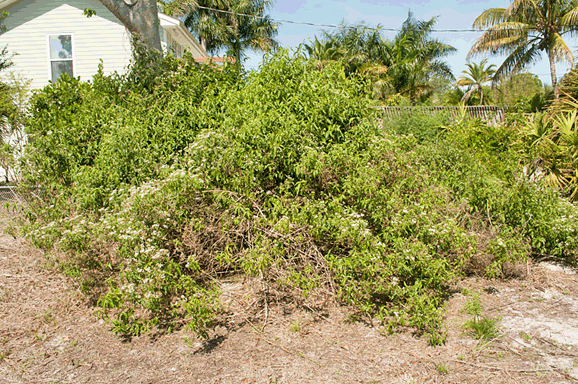 Chromolaena odorata is a native, perennial, woody, flowering shrub in Family Asteraceae (The Aster, Daisy, or Sunflower Family). It is a rapidly growing, multi-stemmed shrub that can grow to a height of 3 m. The species name, odorata, is descriptive of the pungent odor produced when leaves are crushed.
Chromolaena odorata is a native, perennial, woody, flowering shrub in Family Asteraceae (The Aster, Daisy, or Sunflower Family). It is a rapidly growing, multi-stemmed shrub that can grow to a height of 3 m. The species name, odorata, is descriptive of the pungent odor produced when leaves are crushed. 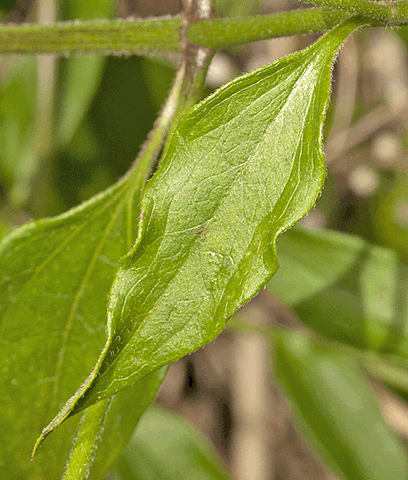 The normal habitat for Jack-In-The-Bush is a hardwood hammock, however this plant found and photographed at the Smith Preserve, is growing at the base of a tree in an exposed area of sandy soil near gopher tortoise burrows.
The normal habitat for Jack-In-The-Bush is a hardwood hammock, however this plant found and photographed at the Smith Preserve, is growing at the base of a tree in an exposed area of sandy soil near gopher tortoise burrows.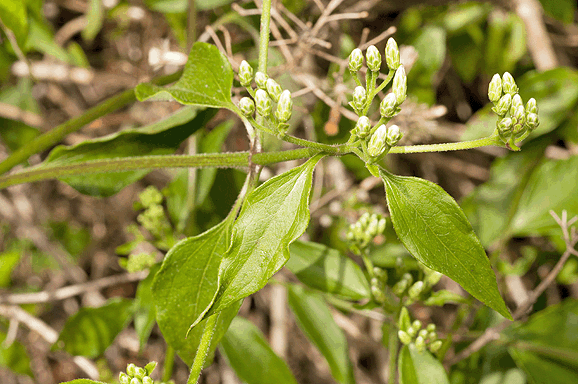

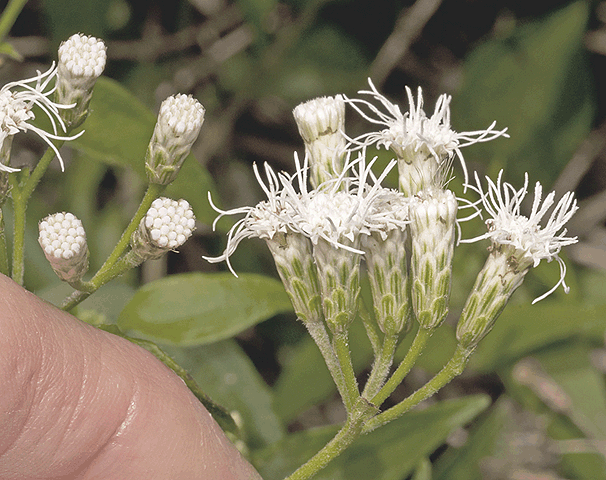
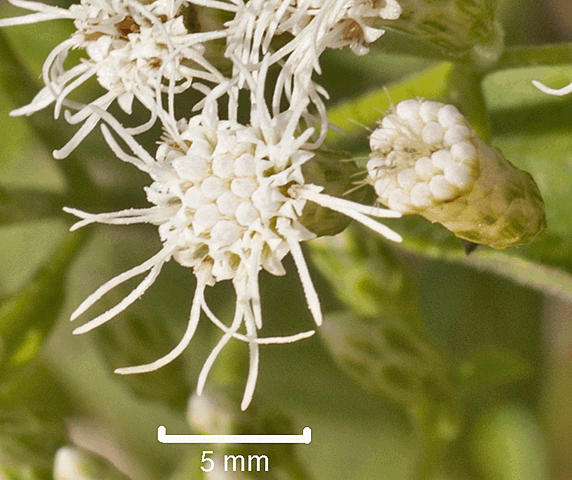
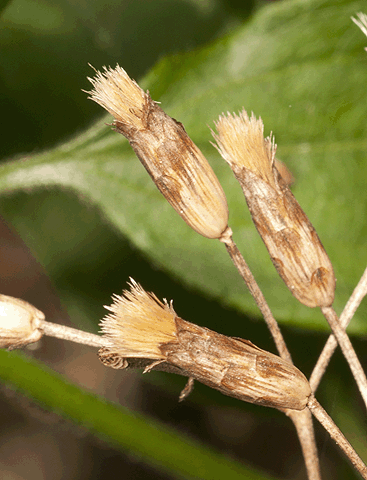 Each plant can produce 80,000 to 90,000 seeds, which are dispersed by wind and by clinging to fur and clothing. The photograph at right shows some of these seeds.
Each plant can produce 80,000 to 90,000 seeds, which are dispersed by wind and by clinging to fur and clothing. The photograph at right shows some of these seeds.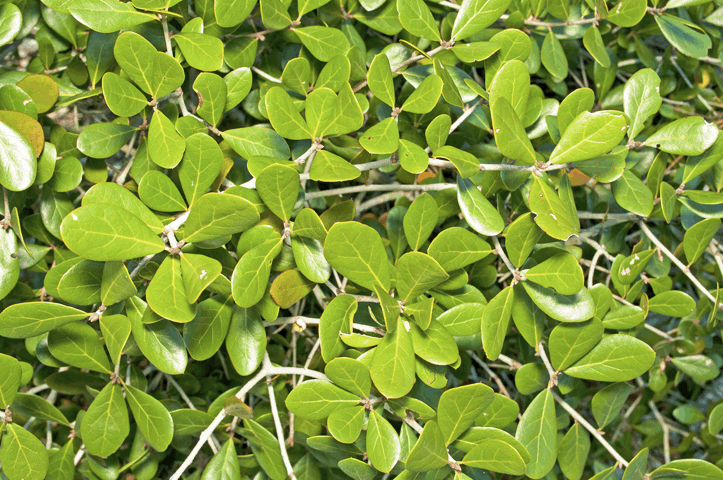
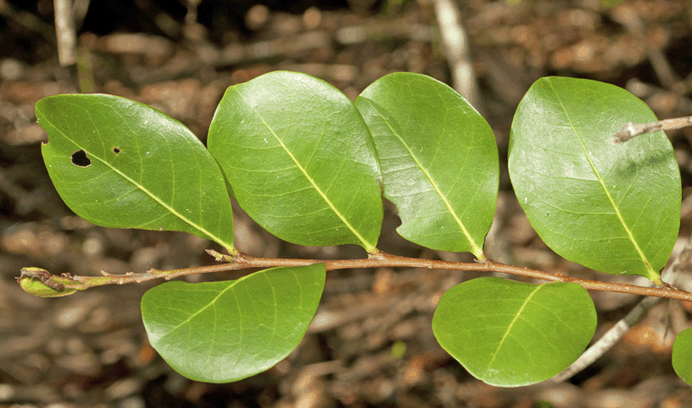
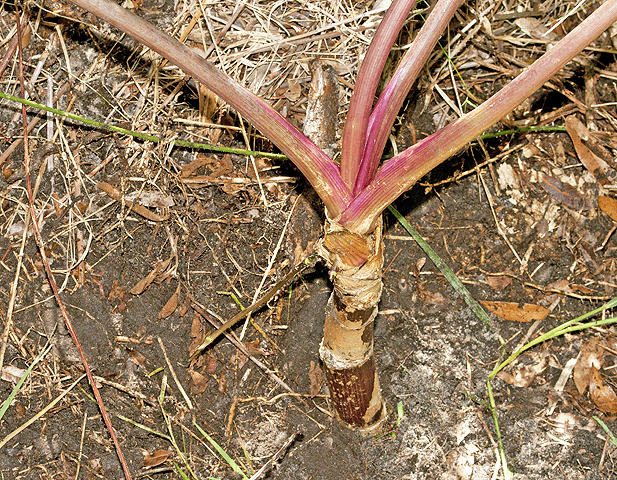
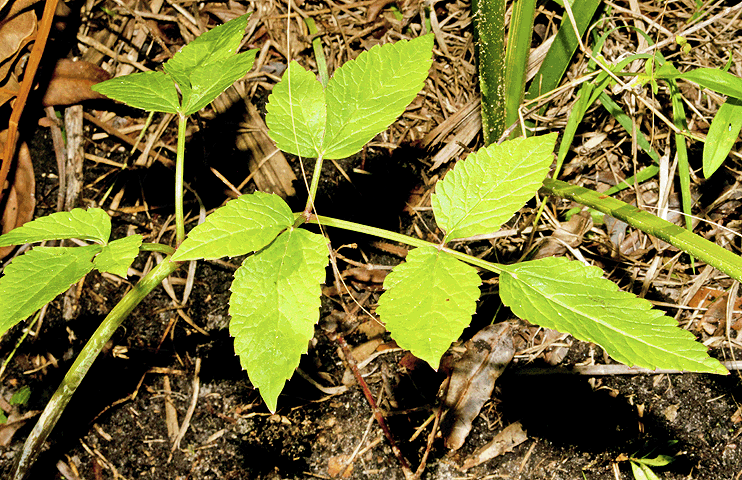
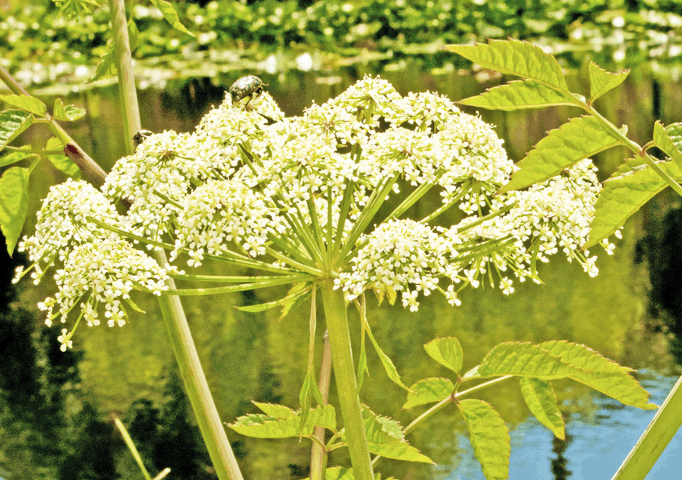 Cicuta maculata is a native, perennial, flowering member in Family Apiaceae (The Carrot and Parsley Family). The genus name Cicuta is Latin for "poison hemlock" and the species name maculata is Latin for "spotted or mottled", which refers to the purple mottling of the stem. This plant can grow 1 to 1.5 m in height and lives in moist sunny to partially shaded areas. It is considered to be the most toxic plant in North America. All parts of the plant are extremely poisonous. Ingestion of spotted water hemlock in any quantity can result in death or permanent neurological damage. To the Iroquois, it was known as suicide root.
Cicuta maculata is a native, perennial, flowering member in Family Apiaceae (The Carrot and Parsley Family). The genus name Cicuta is Latin for "poison hemlock" and the species name maculata is Latin for "spotted or mottled", which refers to the purple mottling of the stem. This plant can grow 1 to 1.5 m in height and lives in moist sunny to partially shaded areas. It is considered to be the most toxic plant in North America. All parts of the plant are extremely poisonous. Ingestion of spotted water hemlock in any quantity can result in death or permanent neurological damage. To the Iroquois, it was known as suicide root. 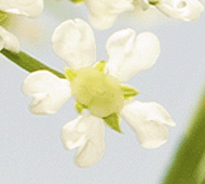
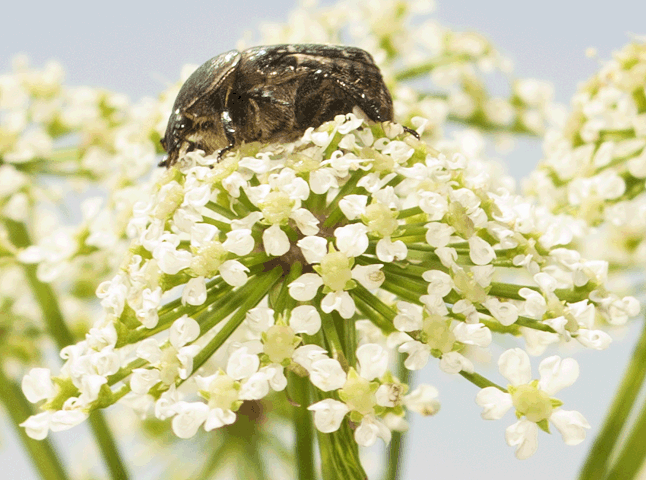 Flowers bloom in the spring and summer and are in inflorescences (clusters arranged on branched stems). An inflorescence looks somewhat like a giant Queen Anne's Lace. As shown at far left, each individual flower is tiny, white, and has five petals. Flowers attract a variety of butterflies, beetles, and flies.
Flowers bloom in the spring and summer and are in inflorescences (clusters arranged on branched stems). An inflorescence looks somewhat like a giant Queen Anne's Lace. As shown at far left, each individual flower is tiny, white, and has five petals. Flowers attract a variety of butterflies, beetles, and flies. 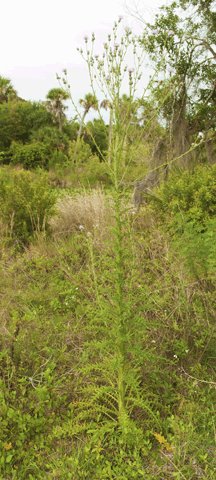
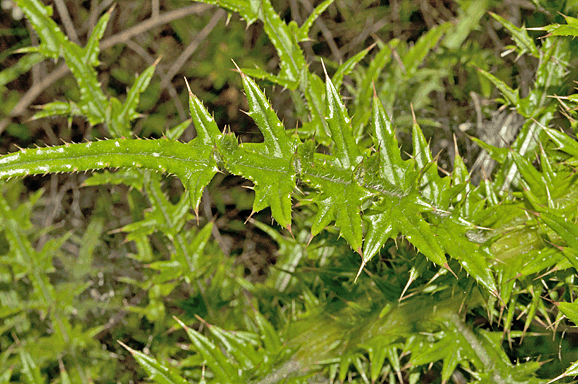 Cirsium horridulum is a member of Family Asteraceae (Aster Family).
Cirsium horridulum is a member of Family Asteraceae (Aster Family). 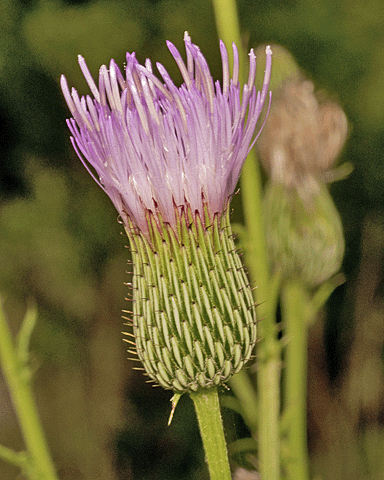
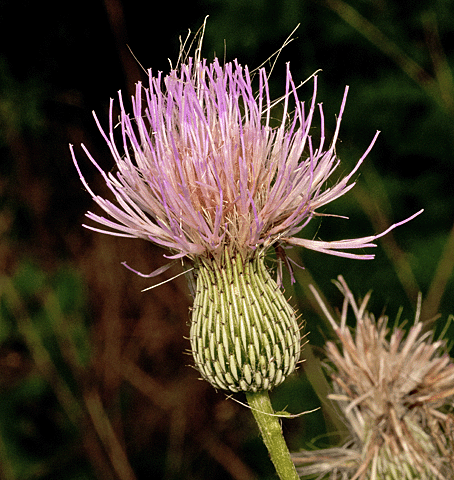
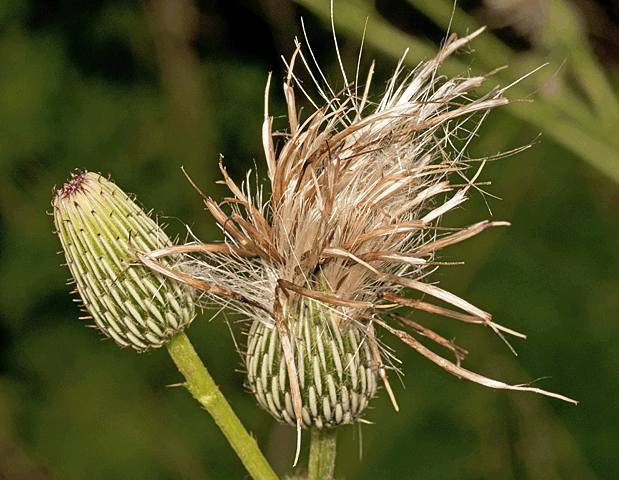 At left, a flower head has gone to seed. Seeds have tufts of tiny hair (pappus) that carry them by wind.
At left, a flower head has gone to seed. Seeds have tufts of tiny hair (pappus) that carry them by wind.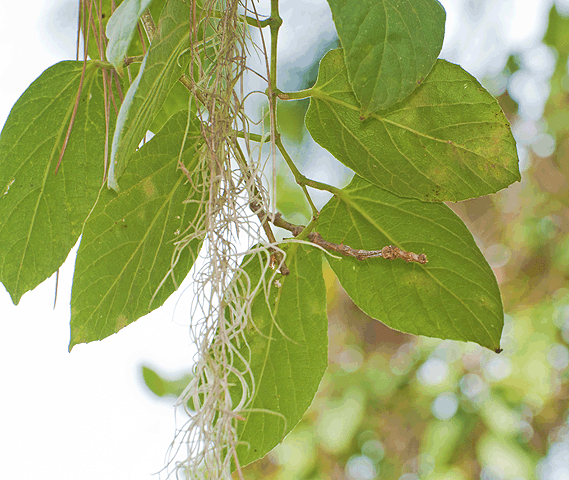
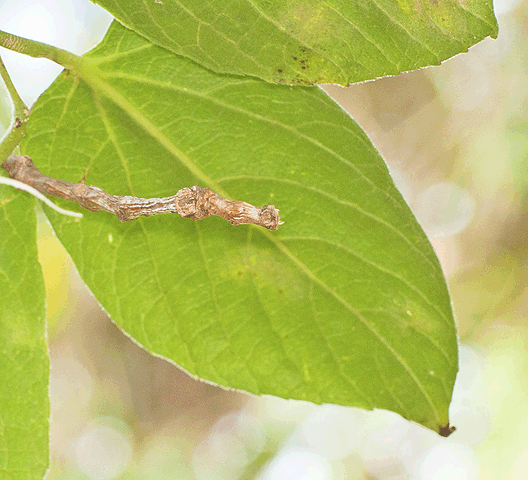
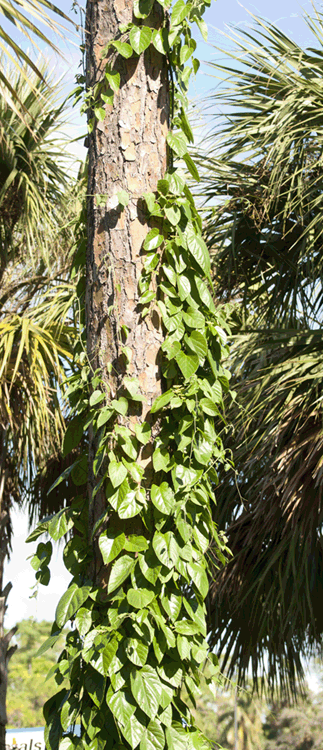 Cissus verticillata
Cissus verticillata